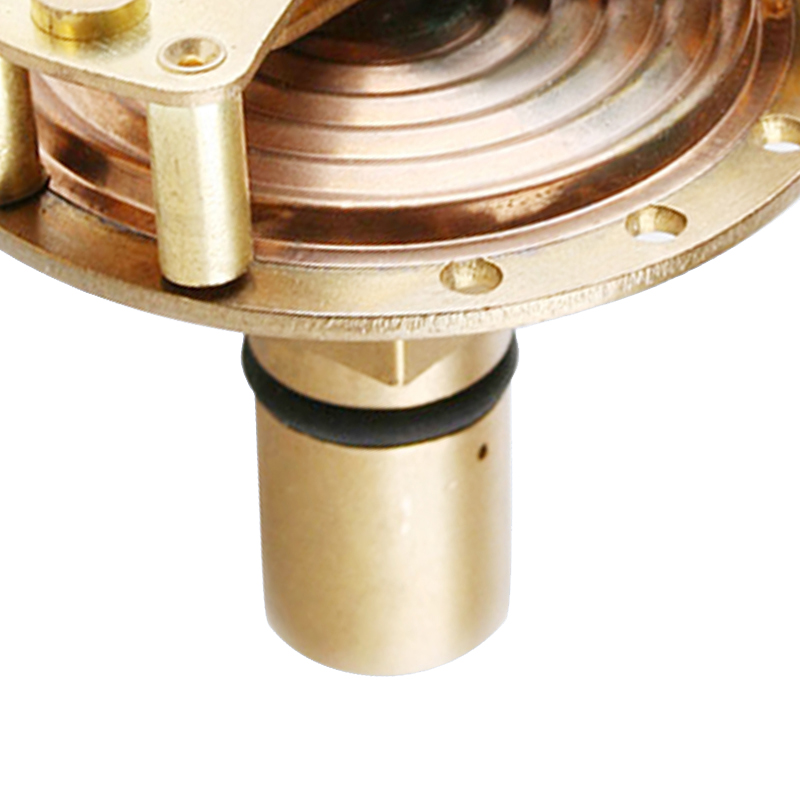
Aug . 19, 2024 20:40 Back to list
Understanding Diaphragm Pressure Gauges in Industrial Applications and Their Benefits
Understanding Diaphragm Pressure Gauges A Comprehensive Overview
A diaphragm pressure gauge is an essential instrument widely used in various industrial applications to measure pressure accurately and reliably. In this article, we will delve into the working principle, construction, advantages, disadvantages, and typical applications of diaphragm pressure gauges.
Working Principle
The diaphragm pressure gauge operates based on the deformation of a flexible diaphragm in response to pressure changes within a system. The diaphragm is a thin, sealed membrane commonly made of materials such as stainless steel, brass, or specialized elastomers. When pressure is applied, the diaphragm deflects, causing a change in its shape. This deflection is then transmitted to a mechanical movement that converts the displacement into a readable value on the gauge face.
Construction
The key components of a diaphragm pressure gauge include
1. Diaphragm The primary sensing element that responds to pressure changes. It can be designed in various shapes, including flat, corrugated, or convoluted, depending on the application requirements.
2. Housing The outer casing that protects the internal components and ensures durability. It is typically made from robust materials to withstand harsh operating conditions.
3. Bourdon Tube or Other Movement Mechanisms Some gauges incorporate a Bourdon tube or copper coil mechanism to amplify the small deflections of the diaphragm.
4. Dial The gauge face displays the pressure reading, usually with a dial calibrated in various units (psi, bar, kPa).
5. Connection Port The point where the gauge connects to the pressure source, allowing the internal diaphragm to sense the pressure accurately.
Advantages
Diaphragm pressure gauges offer several benefits
- High Accuracy They provide precise pressure readings, making them suitable for critical applications in industries such as pharmaceuticals and food processing.
- Versatility Diaphragm gauges can measure both liquid and gas pressures, making them versatile instruments for various environments
.china explain diaphragm pressure gauge

- Resistance to Corrosion Many diaphragm gauges can be constructed with materials that are resistant to corrosive substances, enabling their use in harsh environments.
- Compact Design Their compact size allows for easy installation in tight spaces, an essential feature in many industrial setups.
Disadvantages
Despite their advantages, diaphragm pressure gauges do have some limitations
- Cost Compared to other types of pressure gauges, diaphragm gauges can be more expensive due to their complex construction and materials.
- Limited Pressure Range They are generally suited for lower pressure ranges; extreme pressures may require different types of gauges.
- Sensitivity to Pulsation Rapid pressure fluctuations can affect the accuracy of the readings. In such cases, dampening mechanisms may be required to stabilize the readings.
Typical Applications
Diaphragm pressure gauges find applications across various industries, including
- Chemical Processing They are used to monitor the pressure of gases and liquids in reactors and distillation columns.
- Food and Beverage In breweries and food manufacturing, diaphragm gauges ensure safe and accurate monitoring of processes.
- HVAC Systems These gauges help monitor and control pressures in heating, ventilation, and air conditioning systems.
- Pharmaceuticals They are critical in maintaining the integrity of processes in the drug manufacturing industry.
In conclusion, diaphragm pressure gauges are vital tools for measuring pressure across diverse sectors. Their high accuracy, versatility, and durability make them essential in modern industrial applications. Despite some drawbacks, their advantages often outweigh the limitations, making them a preferred choice for many engineers and technicians.
-
High-Precision 5 Valve Manifold Differential Pressure Gauge Suppliers
NewsApr.29,2025
-
High-Precision Diaphragm Vacuum Pressure Gauges Manufacturers & Quotes
NewsApr.29,2025
-
Omega Differential Pressure Gauges High Accuracy & Durability
NewsApr.28,2025
-
Low Pressure Differential Pressure Gauges Precision Solutions & Quotes
NewsApr.28,2025
-
Digital Diaphragm Pressure Gaauge Precision Measurement & OEM Quotes
NewsApr.28,2025
-
Differential Pressure Gauge China Price High-Accuracy & Best Quotes
NewsApr.28,2025
